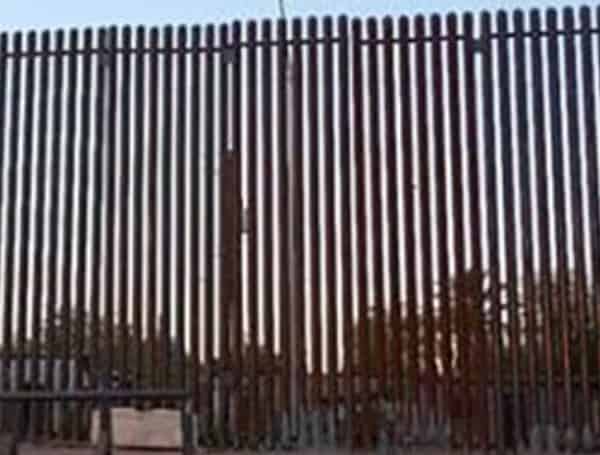Effective physical infrastructure works to secure our Southwest Border. Since the U.S. Border Patrol began constructing border barriers nearly 30 yea
Effective physical infrastructure works to secure our Southwest Border. Since the U.S. Border Patrol began constructing border barriers nearly 30 years ago, these barriers have proved to be a critical component in gaining operational control of the border.
Deploying the wall system in high priority areas—particularly urban areas where illegal border crossers can quickly vanish into the surrounding community—allows the USBP to decide where border crossings take place, not smugglers, and the USBP can deploy personnel and technology in complement to the border barrier.
In 2006, the U.S. Senate voted in a bipartisan 80 to 19 majority to pass the Secure Fence Act, which authorized the construction of physical infrastructure to secure the border. Securing our Southwest Border was once a bipartisan issue.
Neglected, easily compromised, and sparsely constructed, the border fence concept needed a reinvestment in 2017. From day one, President Trump prudently recognized that America must have an effective border wall system that delivers first-of-its kind capabilities to the men and women of the USBP.
Today, CBP is constructing a border wall system which includes a combination of various types of infrastructure including:
- Internally hardened steel-bollard barriers from 18’ to 30’ high
- New and improved all-weather access roads
- Perimeter lighting
- Enforcement cameras
- Other related technology
The border wall system deploys the right mix of personnel, technology, and infrastructure to meet the challenges of a dynamic border threat environment and ultimately achieve operational control of the border.
DEPLOYED:
As of October 23, 2020, construction of the wall system breaks down as follows:
- FUNDED: 738 miles
- COMPLETED CONSTRUCTION: 386 miles
- UNDER CONSTRUCTION: 195 miles
- PRE-CONSTRUCTION PHASE: 157 miles
Bottom line: The Trump administration is well on its way to meet the goal of having 450 miles of new border wall system deployed by December 31, 2020.
EFFECTIVE – DISRUPTING CRIMINALS AND SMUGGLERS
The results speak for themselves: illegal drug, border crossings, and human smuggling activities have decreased in areas where barriers are deployed. For example:
San Diego Sector:
- In one short 12 mile section in the San Diego Sector, the wall reduced CBP manpower requirements by 150 agents every 24 hours. That is approximately a $28 million return on investment per year in salaries and benefits. These agents were redeployed to fill resource gaps in other areas of the border — further improving our security.
- CBP’s San Diego Field Office continues to be a significant source of narcotics seizures. From FY 19 to FY 20, seizures of fentanyl, marijuana, and methamphetamine all increased, with meth seizures jumping at alarming rates in the past several years – demonstrating that the border wall is forcing drug smugglers to where we are best prepared to catch them – our ports of entry.
Yuma Sector:
- Illegal entries in areas with new border wall system plummeted over 87% in FY 20 compared to FY 19.
- In FY 19, CBP deployed a temporary barrier, which it has replaced with a permanent system, at the Sanchez Canal, which resulted in illegal entries decreasing in this area by more than 1,000 per month.
- In FY 19, in areas of older existing border fencing or barriers, Yuma Sector apprehended 12 large groups (over a 100 persons) compared to zero large groups in FY 20 with new border wall system.
- Family Unit entries have decreased over 95%
- FY 19: 51,961 vs. FY 20: 2,940
- Family Unit entries have decreased over 95%
RGV Sector:
- In a section of RGV (Zone 1) apprehensions have decreased since the construction of the border wall system. This is a location that has never had any border infrastructure.
- CBP has seen 79% decrease in apprehensions in this area (Zone 1) since the completion of border wall system.
- CBP has seen a 26% decrease in narcotics seizures since the completion of border wall system in this area.
- In another section of RGV, prior to construction of the border wall system it was common to see illegal aliens running across a heavily traveled road, putting themselves and members of the community at risk.
- Smugglers are now forced to take their groups further west into areas that are less dense with brush and easier for CBP surveillance cameras to detect illicit activity.
El Paso Sector:
- El Paso Sector has experienced a significant reduction in drug and smuggling activities in areas where the new border wall system was built.
- Most notably, in Zones 14 and 15 of the Santa Teresa (STN) AOR where apprehensions have decreased by 60% and 81% respectively when comparing the last half of fiscal year FY 20 to the first half of FY 20.
- El Paso Station has experienced similar results from the new border wall in Zones 20 – 23, with a reduction in apprehensions of 70% during the same timeframe.

COMMENTS